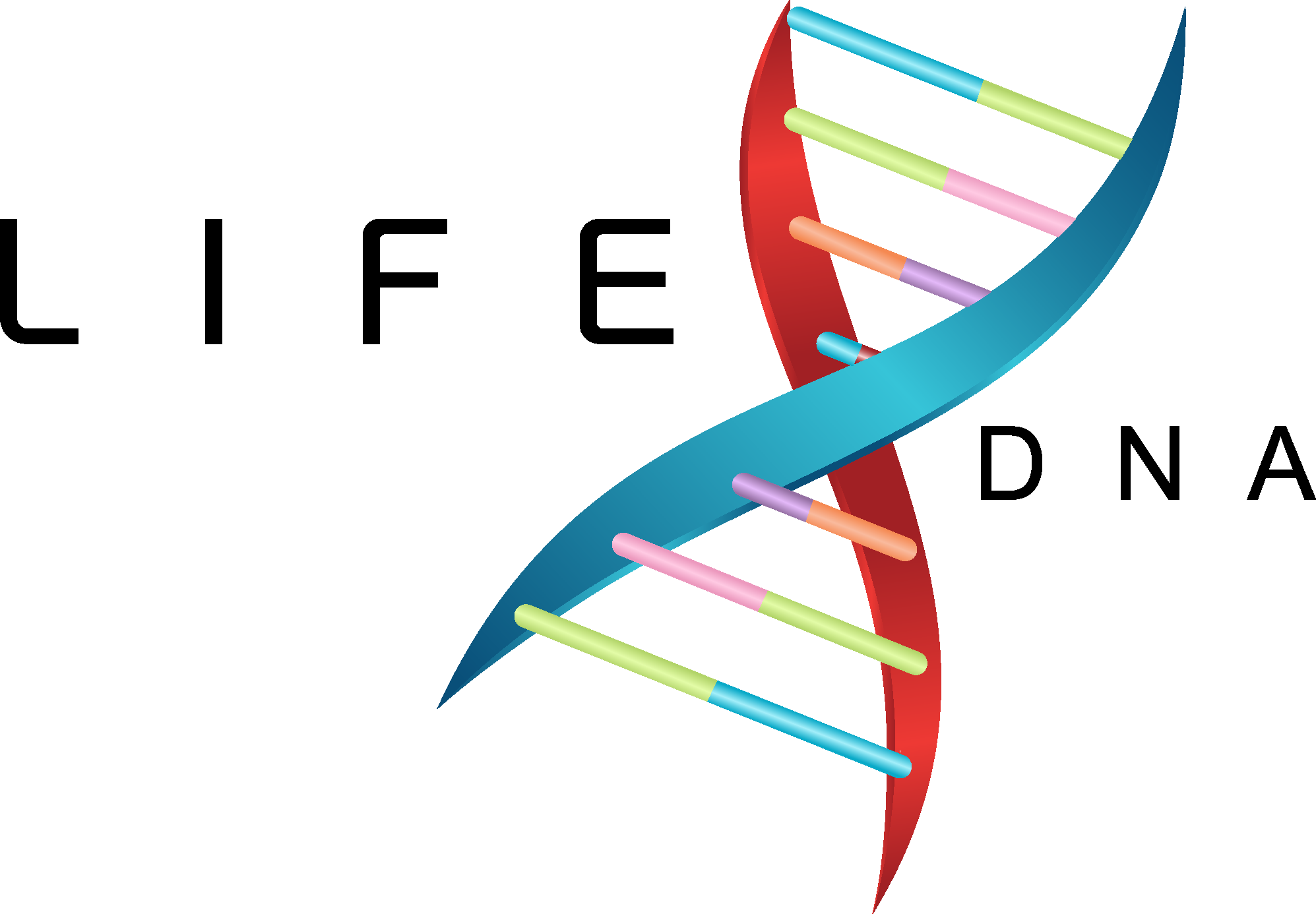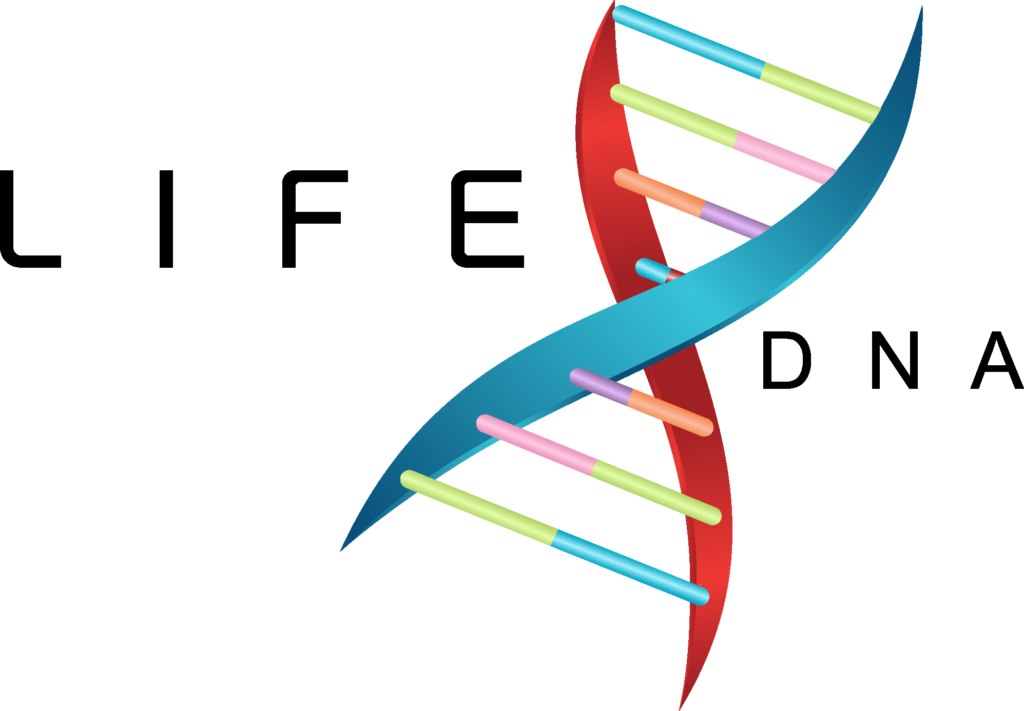
Methylation — A Practical Guide to Understanding, Health, and Optimisation
By Robert Van der Moigg, Founder, Life X DNA™
What Is Methylation, Really?
If there’s one process in the body that quietly influences almost everything, it’s methylation. It’s not something you feel directly or see on a test strip. You can’t measure it in a blood draw the same way you can cholesterol or vitamin D. But it’s happening billions of times every second in every cell of your body.
In simple terms, methylation is a biochemical process that involves the transfer of a small chemical group called a methyl group — one carbon atom and three hydrogens (CH₃) — from one molecule to another. That tiny transfer is what turns genes on and off, detoxifies hormones and chemicals, produces neurotransmitters, supports energy production, and helps repair DNA.
Think of it like your body’s switchboard. Every time a methyl group is added or removed, something in your biology changes. It’s not a single pathway — it’s a network of cycles that are constantly interacting with each other, influencing how efficiently your body operates.
When methylation is working well, everything hums along smoothly. When it’s not, the effects can ripple through every system — from mood and energy to hormones, detoxification, and even longevity.
Understanding the Methylation Cycle
Methylation isn’t one process; it’s a collection of three core biochemical cycles that feed into each other:
-
The Folate Cycle
-
The Methionine Cycle
-
The Transsulfuration Cycle
Together, they manage how your body processes nutrients like folate, B12, B6, and betaine — converting them into usable forms that influence everything from brain chemistry to liver detoxification.
Let’s unpack each one in plain English.
1. The Folate Cycle
The Folate Cycle begins with the vitamin folate — or more specifically, active folate, which is the methylated form your body can actually use (5-MTHF).
Inside this cycle, folate acts as a key supplier of methyl groups. These methyl groups are then passed downstream to support DNA synthesis and repair, the creation of red blood cells, and the recycling of homocysteine into methionine.
Several important genes regulate how efficiently this happens, including:
-
MTHFR (Methylenetetrahydrofolate Reductase)
-
MTR and MTRR (Methionine Synthase and Methionine Synthase Reductase)
-
SHMT1, TYMS, DHFR, and others
If you’ve ever heard someone mention they “have the MTHFR gene,” what they actually mean is that they carry a variant in one of these folate-processing genes. It’s not inherently bad — it just changes the efficiency with which you convert folate into its active form.
When this pathway slows down, it can lead to elevated homocysteine, sluggish detoxification, poor DNA repair, and issues like fatigue, low mood, or hormonal imbalance. On the other hand, when it’s working efficiently, your cells are constantly regenerating and your neurotransmitter balance tends to be more stable.
2. The Methionine Cycle
If the Folate Cycle supplies the methyl groups, the Methionine Cycle decides where to spend them.
Methionine, an amino acid found in protein-rich foods, gets converted into S-adenosylmethionine (SAMe) — your body’s universal methyl donor. SAMe is the “currency” of methylation. It gives away methyl groups to hundreds of reactions — from turning genes on and off (epigenetics) to producing neurotransmitters like dopamine and serotonin.
Once SAMe donates its methyl group, it becomes S-adenosylhomocysteine (SAH), which then breaks down into homocysteine. Homocysteine is a crossroads molecule — it can be recycled back into methionine (with help from folate and B12) or diverted down the Transsulfuration Cycle for detox and antioxidant support.
Key genes here include:
-
AHCY (breaks down SAH)
-
BHMT (recycles homocysteine via betaine)
-
COMT (breaks down catecholamines like dopamine, adrenaline, and oestrogen)
-
MAT1A, GNMT, PEMT, DNMT3B — all influencing how SAMe is created and used
When this cycle runs smoothly, methylation is balanced — your mood, hormones, and detox systems all get what they need. But if it’s sluggish, you can end up with elevated homocysteine, low SAMe, or poor neurotransmitter metabolism — often showing up as fatigue, brain fog, anxiety, or inflammatory issues.
3. The Transsulfuration Cycle
This is where methylation meets detoxification.
The Transsulfuration Cycle takes excess homocysteine and funnels it down a pathway to create glutathione, your body’s master antioxidant. It’s also responsible for producing taurine and cysteine — both critical for liver function, bile flow, and immune balance.
The main genes in this pathway include CBS and CTH (PDXX).
If there’s a bottleneck here, homocysteine can back up, oxidative stress can rise, and your body’s ability to neutralise toxins, alcohol, or environmental chemicals may decline. This is why people with sluggish methylation often experience sensitivity to caffeine, perfume, alcohol, or stress — their detox pathways are under pressure.
How It All Connects
These cycles don’t operate in isolation. They’re part of a tightly woven metabolic network. For example:
-
The Folate Cycle feeds methyl groups into the Methionine Cycle.
-
The Methionine Cycle provides SAMe for neurotransmitters and hormones.
-
The Transsulfuration Cycle uses homocysteine to create glutathione.
When one part slows down, the others compensate — sometimes at a cost. For instance, if folate metabolism is impaired (like in MTHFR variants), your SAMe production may fall, affecting mood and detoxification.
This is why methylation imbalances can look completely different from person to person. One person might experience anxiety or depression; another might have hormone issues, inflammation, or chronic fatigue. The root cause — inefficient methylation — can express itself in many different ways.
Common Terms Explained
Let’s clear up some of the most common terms that appear in methylation reports:
-
Methyl Group (CH₃): A carbon and three hydrogens — the core unit of methylation.
-
Methyl Donor: A nutrient or molecule that gives up a methyl group (e.g. SAMe, betaine, choline).
-
Homocysteine: A byproduct of methylation. Elevated levels can indicate a bottleneck in the cycle.
-
Folate (B9): Needed to create methyl groups in the first place.
-
Vitamin B12 (Methylcobalamin): Essential for converting homocysteine back to methionine.
-
Vitamin B6 (Pyridoxal-5-Phosphate): Helps convert homocysteine into cysteine via the Transsulfuration Cycle.
-
COMT (Catechol-O-Methyltransferase): Breaks down dopamine, norepinephrine, and oestrogen — influencing mood, focus, and stress tolerance.
-
MTHFR: Converts folate into its active methylated form (5-MTHF).
Understanding these terms takes the mystery out of methylation. Once you grasp how nutrients and genes interact, you can start to see how diet, stress, and environment either support or sabotage these systems.
The Impact of Methylation on Health and Wellness
Methylation touches virtually every system in the body. Below are some of the key areas where its impact is most profound.
1. Mental Health and Neurotransmitters
Your brain relies heavily on methylation. The production and breakdown of neurotransmitters like dopamine, serotonin, and norepinephrine all depend on methyl groups.
If methylation is sluggish, you might experience low mood, anxiety, or poor focus. Conversely, if it’s overactive (as can happen with fast COMT activity), you might burn through dopamine too quickly, leading to motivation crashes or “wired-but-tired” energy.
Balancing methylation often brings noticeable improvements in mood, mental clarity, and emotional regulation.
2. Detoxification and Liver Function
Every day, your liver processes a barrage of chemicals — from food additives and alcohol to hormones and environmental toxins. Methylation plays a central role in this detox system, especially through the production of glutathione.
When methylation slows down, your liver can struggle to keep up. This can show up as fatigue, chemical sensitivity, or slow recovery after stress or illness. Supporting methylation through nutrition, hydration, and cofactor balance helps the liver run at full capacity.
3. Hormonal Balance
Methylation regulates how oestrogen, testosterone, and other hormones are metabolised. For instance, COMT helps break down catechol oestrogens — reactive compounds that, if not cleared properly, can contribute to PMS, fibroids, or hormone-related cancers.
Optimised methylation supports stable hormone metabolism, cleaner detox pathways, and better reproductive health in both men and women.
4. Inflammation and Immunity
Homocysteine is not just a byproduct — it’s also an inflammatory marker. Elevated homocysteine can increase oxidative stress, damage blood vessels, and disrupt nitric oxide production (which regulates circulation).
When methylation is balanced, homocysteine stays within a healthy range, inflammation reduces, and immune resilience improves. This is one of the reasons methylation is so closely linked with cardiovascular health and longevity.
5. Energy Production and Mitochondrial Health
Methylation is essential for mitochondrial function — the energy factories inside your cells. It helps regulate the creation of CoQ10, carnitine, and creatine, all vital for ATP production.
Poor methylation can contribute to chronic fatigue, muscle weakness, or poor exercise recovery. Restoring proper methylation often leads to noticeably higher energy and vitality.
6. Longevity and DNA Repair
Every time a cell divides, your DNA needs to be copied and protected. Methylation manages that process. It ensures damaged DNA is repaired correctly and prevents unwanted genes (like those promoting cancer or inflammation) from being activated unnecessarily.
This is why methylation sits at the heart of epigenetics — the science of how your environment and lifestyle influence gene expression. Optimising methylation is one of the most effective ways to promote healthy ageing and extend lifespan quality, not just years.
Why Methylation Can Go Off Track
Several factors can disrupt methylation:
-
Genetic variants (like MTHFR, COMT, AHCY, or CBS) that change enzyme efficiency.
-
Nutrient deficiencies, especially in folate, B12, B6, riboflavin, zinc, and magnesium.
-
Chronic stress, which consumes methyl donors through adrenaline metabolism.
-
Toxin exposure, alcohol, smoking, and poor diet.
-
Gut dysbiosis, which reduces nutrient absorption and increases toxin load.
-
Ageing, which naturally slows methylation capacity.
The good news? Methylation is highly modifiable. By understanding your genetics, nutrient status, and lifestyle inputs, you can fine-tune the system for better performance.
Optimising Methylation — Where to Begin
The first step in optimising methylation is understanding your unique genetic map. Everyone’s methylation profile is different. Some people are naturally “slow methylators,” while others are fast. Both can cause problems — the goal is balance.
At Life X DNA™, we analyse thousands of genes and millions of variants to map how your methylation system functions at every step — including your Folate, Methionine, and Transsulfuration cycles, as well as connected pathways like neurotransmitter balance, detoxification, and mitochondrial efficiency.
Once you have that data, optimisation becomes clear and targeted.
1. Nutrient Support
The foundation of methylation is built on nutrients. The key ones include:
-
Active Folate (5-MTHF) — the usable form of folate. Avoid synthetic folic acid if you carry MTHFR variants.
-
Vitamin B12 (Methylcobalamin or Adenosylcobalamin) — crucial for recycling homocysteine.
-
Vitamin B6 (P5P) — helps convert homocysteine into cysteine and glutathione.
-
Riboflavin (B2) — supports MTHFR and MAO activity.
-
Betaine (TMG) and Choline — alternative methyl donors that relieve pressure on the folate pathway.
-
Magnesium and Zinc — essential cofactors for most methylation enzymes.
It’s important not to over-supplement blindly. Too much methyl support can push the system too hard, leading to anxiety, irritability, or insomnia in some people. Precision is key — start small, track responses, and use testing as your guide.
2. Detox and Antioxidant Support
Since methylation feeds into detoxification, supporting your liver and antioxidant systems is essential. Focus on:
-
Adequate hydration
-
Sulphur-rich foods (garlic, onions, cruciferous vegetables)
-
Glutathione or its precursors (NAC, glycine)
-
Regular sweating — sauna or exercise
-
Limiting alcohol and chemical exposure
3. Managing Stress and Sleep
Stress burns through methyl donors faster than almost anything else. Each adrenaline surge requires methylation for clearance. Chronic stress, poor sleep, and excessive caffeine all tax the system.
Mindfulness, consistent sleep patterns, and magnesium-rich diets help stabilise methylation and nervous system balance.
4. Diet and Lifestyle
A methylation-friendly diet is rich in whole, colourful foods:
-
Leafy greens (for folate)
-
Eggs, liver, fish, and meat (for B12, choline, and methionine)
-
Legumes and seeds (for B6 and zinc)
-
Limited processed sugar and refined oils
Regular movement, sunshine, and breathing space all help. Remember, methylation doesn’t just respond to pills — it responds to how you live.
5. Testing and Tracking Progress
Genetics gives you the blueprint, but functional testing shows how the system is performing. Useful markers include:
-
Homocysteine levels (ideal range ~6–9 µmol/L)
-
Glutathione levels
-
B12, Folate, and B6 status
-
Liver function and inflammatory markers
At Life X DNA™, our Ultimate Pro Pack integrates methylation genetics with AI-driven analysis and practical recommendations — helping individuals and clinicians pinpoint where intervention makes the biggest difference.
The Bigger Picture — Methylation and Longevity
One of the most exciting areas of research right now is how methylation relates to biological age. DNA methylation patterns are used to create what’s called the “epigenetic clock” — a measure of how old your cells really are.
By supporting methylation balance, you’re not just improving day-to-day wellbeing — you’re influencing the speed at which your body ages. That’s why methylation is increasingly being recognised as the central hub of longevity science.
When you understand methylation, you understand how to influence gene expression, reduce chronic inflammation, and improve resilience at the deepest biological level.
From Insight to Action
The truth is, you can’t guess your methylation efficiency by how you feel. Two people can have identical diets but very different outcomes because their genetics determine how those nutrients are processed.
That’s why genetic testing — when done properly — is so powerful. It takes the guesswork out of health optimisation. But not all tests are created equal.
At Life X DNA™, we’ve built the most advanced methylation testing available. Our technology analyses thousands of genes and over 20 million SNPs, imputing hundreds of millions more with 99.99% accuracy. We don’t just tell you which genes you have — we show you how they interact, how they influence each cycle, and how to correct imbalances using precise, personalised recommendations.
The Ultimate Pro Pack covers every methylation gene — from MTHFR and COMT to CBS, AHCY, and beyond — plus connected pathways that influence detox, neurotransmitters, inflammation, and energy metabolism. You get over 1,200 interactive reports and personalised supplement suggestions, all within a secure, easy-to-use online portal.
But more importantly, you gain clarity — the ability to finally understand why you feel the way you do, and how to change it.
My Perspective
After years in this field, I’ve learned that methylation isn’t about perfection — it’s about balance. Some people overmethylate, some undermethylate. Some need more support from nutrients like B12 and folate; others need to slow the system down.
The real art is knowing which lever to pull. And that’s where data, interpretation, and context come together. It’s what Life X DNA™ was built to do — to give people access to truly actionable insights that go beyond guesswork and hype.
Because when you understand your methylation, you understand how your body manages stress, detoxifies, creates energy, and stays young. It’s one of the most empowering things a person can learn about their biology.
In Closing
Methylation is the foundation of optimal health. It influences how you think, feel, and age. It connects nutrition, genetics, and lifestyle in one elegant, adaptable system — one that can be measured, understood, and improved.
When you learn to support it — through the right nutrients, stress management, detox balance, and lifestyle — the results can be life-changing.
For most people, it’s not about radical interventions or chasing new fads. It’s about understanding the fundamentals — how your methylation cycles work, what your unique genetics require, and how to bring them into balance.
That’s the power of personalised health.
That’s what we do every day at Life X DNA™.


